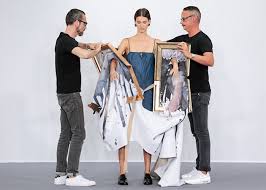HISTORY OF ORIGIN AND DEVELOPMENT OF ART OF ENAMEL (part 1)
 The history of enamel art, as well as jewelry, has more than three thousand years of history. When and where was the first enameling, i.e. colored glass in the molten state is connected to metal, it is impossible to determine exactly. Higgins in the description of Greek and Roman jewelry mentions the earliest works with enamel.
The history of enamel art, as well as jewelry, has more than three thousand years of history. When and where was the first enameling, i.e. colored glass in the molten state is connected to metal, it is impossible to determine exactly. Higgins in the description of Greek and Roman jewelry mentions the earliest works with enamel.
For example, in Mykonos (Greece), metal objects were found with soldered glass plates painted in blue, made between 1425 and 1300. BC. These items can be considered the oldest of the known finds. From the 6th century BC e. Greeks systematically deposited enamel on gold jewelry.
On the island of Cyprus, flower-shaped pendants made using the technique of filigree enamel, made around the 14th century, were found. BC. Egyptian influence is clearly felt in the form and technique of execution. In Curium (Cyprus) in one of the burials of the XII century. BC. discovered a golden scepter topped with a ball on which two figures of eagles are made. The ball and eagles are partially covered with lilac, green and white notched enamel.
In the Azerbaijan SSR a diadem was found with rosettes, leaves and flowers decorated with filigree enamel (VII century BC).
From the first half of the VI century. BC. Greek jewelry was covered with white, dark blue, dark green and pale turquoise filigree enamel.
Both in Etruria and in the southern part of the Autonomous Soviet Socialist Republic, similar decorations of the 5th-7th centuries were found. BC. with typical Hellenistic ornaments that allow us to judge the Greek influence on the development of artistic crafts.
From the 3rd century BC. small metal pendants, completely covered with enamel, reached us. They were probably immersed in molten colored glass.
Despite fragmentary information, it can be argued that in the eastern Mediterranean already in the 1st millennium BC glass was fused to metal and that Greek and later Etruscan jewelry were decorated with enamel. Despite the fact that these first attempts corresponded to enameling on technical grounds, nevertheless, if we consider them from an artistic point of view, they are only a form of polychrome enrichment of a metal jewelry encrusted with polished plates of precious stones, ceramics, smalt or glass glued into the recesses between soldered wire partitions.
The transition from inlay to enamel could occur where the technical prerequisites for metalworking and the manufacture of low-melting glasses were quite widely developed. All that was required was to put pieces of glass or a little glass powder on the metal and melt, as has long been practiced in glazing clay.
An interesting find were objects found in a Mycenaean workshop in a palace in Thebes (XIV century BC) in which, along with gold, glass was also processed. In some places they are badly damaged and therefore it’s rather difficult to establish whether it was glass powder melted on the product, pre-heated pieces of glass were pressed in or glass plates were cut and glued.
And if you look for the very origins of this art, it would be more appropriate to talk not about a single case of glass melting, but about the mass production of metal products in conjunction with colored glass. For this reason, it would be more appropriate to consider the ancient Egyptian inserts from ornamental stones.
Egyptian art of enameling
Already at the time of the 5th dynasty (from 2563 to 2423 BC), examples of inserts in the notches were known. Figured images, written signs and ornaments were made on gold in the form of recesses and then filled with precious stones and smalt.
Already from the 12th dynasty (2000 BC), the technique of inserting ornamental stones into cells became decisive for Egyptian jewelry. The cells were a transitional step to the cloisonne and notched enamel technique.
The cells were made by soldering partitions using the technology of later cloisonne enamel. Lapis lazuli, carneol and other stones, as well as the smalt that came into use (the 19th dynasty), were processed in the shape of cells and fixed with the same color of resin.
A great example is the pectoral of Senusert II, found in Kahun. It is carved from gold leaf and decorated with gold partitions filled with turquoise, lapis lazuli and carnelian.
Later, glass plates and colored glass powder appeared, which were fixed with glue. By this they created the artistic basis of the color finish of the metal with stone and enamel. Egyptian jewelry always remains strictly flat, stones, enamel, ceramic plates placed in recesses are recessed to the surface of the metal product, creating a mosaic composition.




